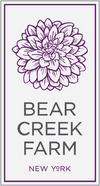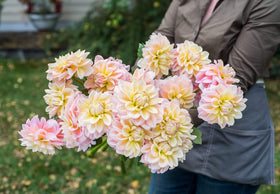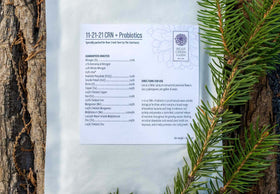Positioning a company correctly makes it distinctive and helps provide a detailed roadmap for growth. However, though earlier in my career, I helped position some of the world’s best-known companies and products, I am equally like the shoemaker’s child who always goes barefoot.
When the time came to position my brand, I was at a loss initially.
I felt that the first step toward credibility was to create a great product, something noticeably different or a problem-solver on the market. I was more worried about product than positioning because I had zero farming experience. There were already many experienced farmers telling their own, layered stories of planning, soil prep, planting, growing and harvesting.
After our dahlia line got off to a humming start, I knew it was time to define how to position the entire business, not just one product, and to determine what kind of brand we would be. I wanted us to grow and to represent something bigger, yet remain authentic.
My marketing background is that of a futurist and an innovator, of looking at disparate pieces of information and tying them together in new ways for solid business success (see my book Red Thread Thinking). I often work not within a category to solve problems, but outside of it. This is how I also approach positioning. It is only natural that this iconoclastic streak would shoe print its way into my own company.
What I believe is interesting about us is not how we face trials and tribulations in the field the same ways others do, but how we tackle them differently (see our blog on mold, for example). There is a wonderful bestselling business book called Blue Ocean Strategy by W. Chan Kim and Renee Mauborgne. Both authors are professors at INSEAD, a highly respected international business school and co-directors of INSEAD Blue Ocean Strategy Institute. Blue Ocean Strategy is a ground-swelling marketing theory based on 150 strategic moves spanning more than 100 years over 30 industries. The theory shows how companies can generate entirely new realms of profit by creating uncontested market spaces (“blue oceans”) to capture new demand, as opposed to competing in same-old existing markets (“red oceans” made bloody by fierce competition). By creating novel elements the industry has never offered, a company lifts buyer value.
 |
 |
In a nutshell, we broke rules to build our flower brand positioning. We looked for the outlier position, the blue ocean strategy. We surveyed all the ways we are different. We are not competing with the same attributes as everyone else, but are creating a brand new set. It is an exciting way to shape a trend rather than to adapt to external trends as they occur.
Here is how it worked for us: Purveyors of flowers want reliability, good flower quality and long lasting in the vase, all at a good price. (These are the top ones.) Consumers want the same thing. Also many farm positionings are built on great agricultural experience stories or gorgeous photos of bouquets (something we can’t beat given we are the closest flower farm to NYC, a mecca for the world’s top flower designers, many now our customers). This is a red ocean, i.e., what everyone else is offering.
With dahlias, we used the blue ocean strategy and made tall a new attribute. The key problem we solved, therefore, was to produce and sell them very tall. This not only made them longer-lasting but it gave them a highly stylized fashion look and also provided gracefulness for the giant, abundant-sized blooms we wanted to feature. Tall is fashionable (my NYC and Europe background is a fashion-focused milieu) but also makes for a highly workable flower for all types of designs. So in problem solving, we are creating a new buyer utility—that of style and image—that wasn’t in the consideration set before. We represent tall. Sky-high tall, like New York itself, as well as fashion-forward.
The outlier and blue ocean strategies are a natural and, more important, credible fit for us because they mirror my innate personal style and professional background in fashion, marketing and innovation. The framework of our positioning takes hold:
- tall – tall flowers really stand out and reach above the rest, but tall has so many other passionate and emotive meanings like “tall ideas,” which means “high quality” or “walk tall,” which is brave and self-assured;
- New York/Europe fashion mindset—a multicultural, eclectic ideal, with a touch of chic; and
- innovation—finding the problems to solve or gaps to fill and having the courage to test the waters (it might not always work out). For example, we are giving toad lilies a go this year because they are not readily available, but will we be able to stimulate high value commercial interest?
Voila—we have our full-scale positioning: Bear Creek Farm is an innovative, fashion-forward flower farm that uses sustainable practices to cultivate giant, fresh-cut dahlias and luscious, tall rare plants.
This path has worked for us thus far, although it has not been without risk. Ever the outlier, we are trying to create market instead of being in the mainstream. We are making tall a new critical quality to be admired and known. It is a long-held tenet in marketing that to be in the middle is to die.
I can’t say I’d have it another way.




